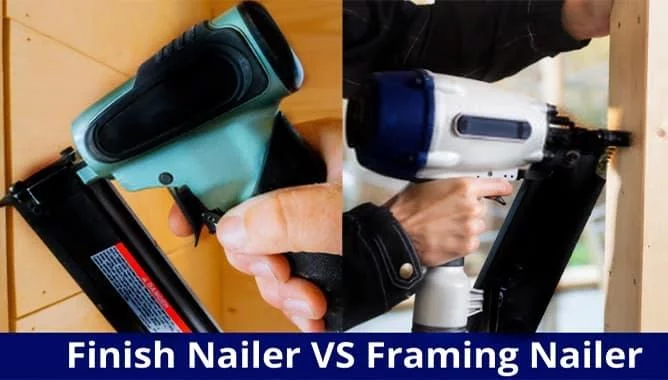
It’s relatively common for people who are new to the construction industry to have trouble choosing which type of nail gun to use for the project they are working on. The various types of nailers that are available can look very similar and they all essentially do the same thing. So, it’s understandable how it can be confusing when you’re trying to decide on which nailer to use.
However, each type of nail gun plays a different role in the construction process so it’s important to choose the right nail gun for our project. It can be what makes our projects a success. Continue reading if you are wanting to learn as I will be explaining how framing and finishing nailers work as well as what makes them so different from each other.
With that being said, let’s learn more about the finish nailer as well as the framing nailer so we can make the right choice and complete our projects successful.
What Are Framing Nailers Used For?
Framing Nailers are designed to be used on large projects. When it comes to nail guns, the framing nailer is usually considered to be heavy-duty. Framing nailers can shoot nails that can range from 1 1/4 inches up to 3 1/2 inches long.
The thickness of these nails can be between 11 1/2 to 8-gauge nails which makes the framing nailer ideal for building large structures such as homes, additions, and decks. Framing nailers are powerful enough to be able to join 2×4 lumber together to create the frame of a structure.
The time that it takes to build a structure with a hammer can be cut down tremendously with a framing nailer. That is what makes it essential for large projects especially if we have a deadline to meet. However, there are two different types of framing nailers available and they shoot different types of nails.
Round Headed Framing Nailer
The Round Headed Framing Nailer shoots the most commonly used nails that we regularly see. They are standard nails with a round head on them. If you have ever driven a nail into something using a hammer, chances are that you have used a round-headed nail.
The round-headed framing nailer is great because they shoot nails that are available just about anywhere since they shoot a standard type of nail. In comparison to other types of nails, the round-headed nail is stronger and is capable of holding more together. This is why round-headed nails are always up to building codes.
The only downside to using round-headed nails is that you will have to reload your round-headed framing nailer more often because each strip of nails will hold fewer nails because of their fully rounded head.
Clipped Headed Framing Nailer
A clipped headed framing nailer shoots nails that have a head-on them that look like the letter D. There is a portion of the head that is clipped to allow that nails in a strip to be closer together. Clipped headed nails are convenient because you can spend less time reloading your clipped headed framing nailer and be more productive.
However, it is important to understand that clipped headed nails are not as strong a round-headed nails and are not ideal wherever you need to rely on the head of a nail to hold the joint you’re putting together. Depending on where you are located, clipped headed nails may or may not be considered as being up to building code too.
Finish Nailers. What Are They Used For?
Finish nail guns are used to shoot much smaller nails and are designed to be very precise and accurate. Usually, these nail guns use 15 to 16-gauge nails that are between one inch and 2 1/2 inches long depending on what type of finishing project we are doing.
Finish nailers are best used for putting the finishing touches on a project. Finish nailers are used to intentionally drive the nail so far into the wood that it buries the head of the nail and leaves a small hole so it can be filled in later.
This gives your project a clean and fully finished look with no signs of any nails left to be seen. The finish nailer is ideal for projects like installing baseboards, any type of paneling and trim or molding installations. It’s also great for building furniture and other DIY projects.
Is A Brad Nailer The Same As A Finish Nailer?
A brad nailer is a type of a finish nailer simply because it is not used during the bulk of most projects and is generally used at the end of projects when our project requires a finished look. Brad nailers are specifically designed for detailed applications such as cabinetry and installing trim or crown moldings.
You may have already guessed that unlike finish or framing nailers, a brad nailer shoots brads instead of nails. Brads are small gauged and headless nails that are great for joining lightwood projects. Since brands don’t have a head-on them like nails do, we won’t need to fill in any nail holes after were done using our brad nailers.In this guide, we have covered the differences between a framing nailer and a finish nailer as well as the different types of each nailer. Furthermore, we have gone over the different types of projects that are associated with each nailer.
So, the next time you are faced with having to decide which nailer is best for the project you’re currently working on, we should be feeling more confident in selecting the one that is ideal for your current project.